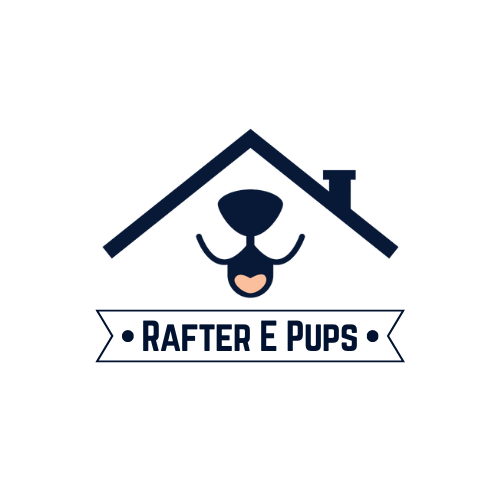Cavalier King Charles Spaniels are beloved for their charming personalities, silky coats, and, of course, those iconic floppy ears. Those endearing ears not only add to their irresistible appearance but also serve important functions in their daily lives. However, they also require special attention and care to keep them healthy and infection-free.
The Cavalier King Charles Spaniel ear care routine is essential for maintaining the health and comfort of this charming breed's distinctive ears. Due to their floppy nature, these ears are more prone to issues like infections and ear mites. Regular inspection and gentle cleaning with dog-specific ear cleaners are key components of this routine. By keeping ears dry, monitoring allergies, and seeking professional guidance when needed, owners can ensure that their Cavalier's ears remain in excellent condition, allowing them to continue flaunting those adorable, iconic floppy ears with pride.
Understanding the Anatomy of Cavalier King Charles Spaniel Ears
Before we jump into the specifics of ear care, it's essential to understand the unique anatomy of a Cavalier King Charles Spaniel's ears. Their ears are characterized by their long, pendulous nature, which makes them more prone to certain issues compared to breeds with erect ears.
- Ear Flaps (Pinnae): The pinnae, or ear flaps, of a Cavalier King Charles Spaniel are covered in soft, silky fur. These floppy ear flaps serve as a protective barrier for the ear canal and play a role in directing sound waves toward the ear canal, aiding in hearing.
- Ear Canal: The ear canal is a tubular structure that extends from the outer ear to the eardrum. In dogs, the ear canal is L-shaped, with the vertical part leading downward and the horizontal part extending inward toward the eardrum.
- Ear Wax (Cerumen) and Glands: Just like in humans, dogs have glands in their ear canals that produce ear wax (cerumen). Ear wax helps keep the ear canal moist and prevents debris from entering too deeply. However, excessive ear wax can lead to problems if not managed correctly.
Why are Cavalier King Charles Spaniel’s Ears More Susceptible to Infection?
Cavalier King Charles Spaniel ears are more susceptible to infection due to their unique anatomical characteristics and genetics. Several factors contribute to their increased vulnerability:
- Floppy Ears: The most prominent feature of Cavalier ears is their long and pendulous nature. While these floppy ears are part of the breed's charm, they create a warm, moist, and dark environment within the ear canal, which is ideal for the growth of bacteria and yeast. Moisture and warmth provide a breeding ground for microorganisms, making infections more likely.
- Narrow Ear Canals: Cavalier King Charles Spaniels have relatively narrow ear canals compared to some other breeds. This can make it more challenging for air to circulate freely within the ear, trapping moisture and promoting the growth of microorganisms.
- Excess Ear Wax: Some Cavaliers may produce more ear wax (cerumen) than other breeds. While ear wax serves a protective purpose by trapping debris and preventing it from entering the ear canal, excessive wax can contribute to ear problems if not adequately managed.
- Genetic Predisposition: Genetic factors can also play a role in making Cavaliers more prone to ear issues. Some individuals within the breed may have a genetic predisposition to allergies or skin conditions that can affect their ears.
Because of these factors, it's crucial for Cavalier King Charles Spaniel owners to be proactive in their ear care routines, including regular inspection, cleaning, and monitoring for signs of infection. This can help prevent ear problems and ensure the ongoing health and comfort of their beloved pet's ears.
What are the Common Ear Problems in Cavalier King Charles Spaniels?
Cavalier King Charles Spaniels are prone to certain ear issues due to the characteristics of their ears and genetics. It's essential for owners to be aware of these common problems and take proactive steps to prevent and address them.
- Ear Infections: Ear infections, also known as otitis, are one of the most common ear problems in Cavaliers. The floppy nature of their ears can trap moisture, dirt, and debris, creating an ideal environment for bacteria and yeast to thrive.
- Ear Mites: Ear mites are tiny parasites that can infest a dog's ear canal. They can cause itching, irritation, and inflammation in the ears.
- Allergies: Some Cavaliers may develop allergies that can manifest as ear inflammation and itching. Allergies can be triggered by various factors, including food, pollen, or environmental allergens.
- Foreign Objects: The floppy ears of Cavaliers are more susceptible to collecting foreign objects, such as grass seeds or plant material, which can lead to irritation and discomfort.
Establishing a Cavalier King Charles Spaniel Ear Care Routine
Maintaining healthy ears in your Cavalier King Charles Spaniel is a crucial aspect of their overall well-being. An effective ear care routine can help prevent common ear problems and ensure your furry friend's ears stay clean and comfortable. Here's a step-by-step guide to establishing an ear care routine for your Cavalier:
Regular Ear Inspection
Start by making it a habit to inspect your Cavalier's ears regularly. Ideally, you should check their ears at least once a week. Look for signs of redness, swelling, discharge, or foul odor. If you notice any of these issues, consult your veterinarian for guidance.
Gentle Ear Cleaning
Cleaning your Cavalier's ears is an essential part of their ear care routine, but it should be done with care to avoid causing harm. Here's how to clean their ears safely:
Materials Needed:
- Dog-specific ear cleaner (consult your veterinarian for recommendations)
- Cotton balls or pads
- Treats for rewards
Ear Care Routine Steps:
- Begin by gently massaging the base of your dog's ear for a few seconds. This can help loosen any debris or earwax.
- Squeeze a few drops of the dog-specific ear cleaner into the ear canal. Make sure to follow the instructions provided on the product.
- Gently massage the base of the ear again to distribute the ear cleaner within the ear canal.
- Allow your dog to shake its head. This will help remove excess ear cleaner and dislodged debris.
- Use a cotton ball or pad to wipe away any visible dirt or discharge from the ear flap and the visible part of the ear canal. Be cautious not to push anything further into the ear canal.
- Offer your dog a treat and plenty of praise to make the experience positive.
Ear Drying
Moisture in the ear canal can contribute to ear infections, so it's crucial to keep the ears dry, especially after baths or swimming. Use a clean, dry cotton ball or pad to gently blot the ear canal's entrance. Avoid inserting anything deep into the ear canal, as this can damage the delicate structures inside.
Monitoring Allergies
If your Cavalier is prone to allergies that affect their ears, work closely with your veterinarian to identify and manage the allergens triggering the reactions. This may involve dietary changes, allergy testing, or medications.
Preventing Ear Mites
To prevent ear mites, keep your dog's living environment clean and ensure they are not in close contact with dogs known to have ear mites. If you suspect ear mites, consult your veterinarian for diagnosis and treatment.
Regular Veterinary Check-ups
Routine visits to your veterinarian are essential for your Cavalier's overall health, including their ear health. During these check-ups, your vet can examine your dog's ears and provide professional cleaning and treatment if necessary.
Tips for a Stress-Free Ear Care Routine
Here are some additional tips to make the ear care routine as stress-free as possible for both you and your Cavalier King Charles Spaniel:
- Positive Reinforcement: Use treats and praise to reward your dog for cooperating during ear cleaning sessions. This will create a positive association with the process.
- Be Gentle: Always be gentle when handling your dog's ears. Avoid inserting anything deep into the ear canal, as this can cause injury or discomfort.
- Stay Calm: If your dog is anxious or resistant to ear cleaning, try to remain calm and patient. Speak to them soothingly and take breaks if needed.
- Consult Your Veterinarian: If you're unsure about how to clean your dog's ears or if you notice any concerning symptoms, consult your veterinarian for guidance. They can demonstrate the proper technique and recommend suitable ear cleaners.
Cavalier King Charles Spaniels are cherished for their sweet nature and distinctive ears. To ensure those adorable floppy ears remain healthy and free from common ear problems, it's crucial to establish a regular ear care routine. By inspecting your dog's ears, cleaning them gently and safely, monitoring for allergies and ear mites, and seeking professional guidance when needed, you can keep your Cavalier's ears in top-notch condition. Remember, a little regular care goes a long way in ensuring your furry friend's overall well-being and happiness.

